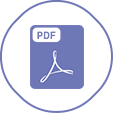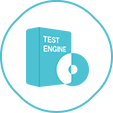OGEA-103 Dumps With Exact Questions and Answers
Exact2pass Provides 100% Valid TOGAF Enterprise Architecture Combined Part 1 and Part 2 Exam OGEA-103 Exam dumps Questions and answers which can helps you to Pass Your Certification Exam in First Attempt.
OGEA-103 PDF

$33.45
- Last Update: 17-Dec-2025
- 134 Questions With Explanation
- 24/7 customer support
- Unlimited Downloads
- 90 Days Free Updates
OGEA-103 PDF + Testing Engine

$46.35

- Last Update: 17-Dec-2025
- 134 Questions and Answers
- Single Choice: 134 Q&A's
OGEA-103 Testing Engine

$36.15
- Quick and safe approach to your success
- 24/7 customer support
- Unlimited Downloads
- 90 Days Free Updates
- Last Update: 17-Dec-2025




